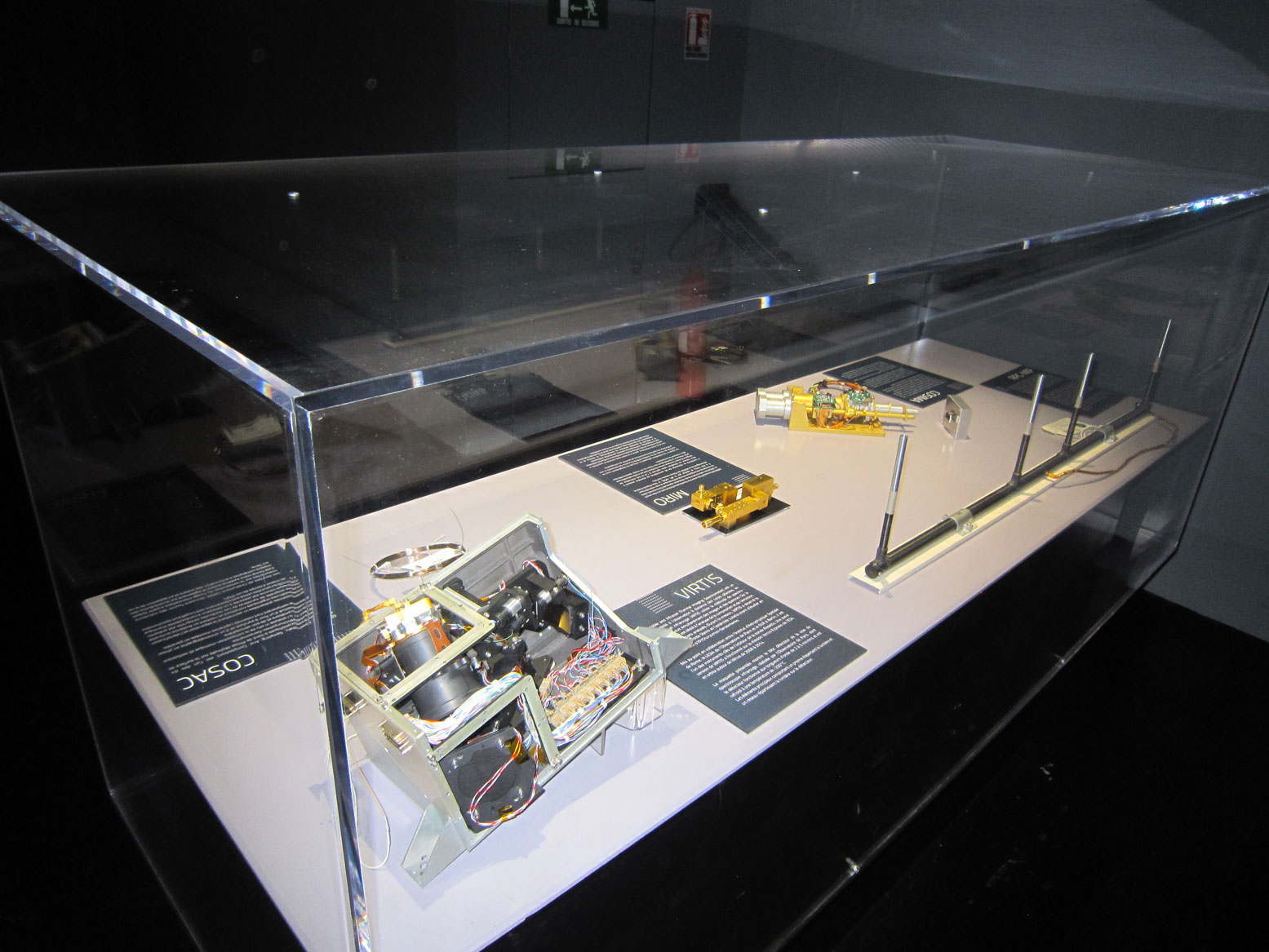Twelve years after its launch, the Rosetta probe will terminate its mission to comet 67P/Churyumov-Gerasimenko by landing on its surface, on Friday, September 30th, 2016.

To mark this landing, the Cité des Sciences et de l’Industrie is organizing, in its main auditorium, an event for the general public.
10h30 - 13h : summary of the mission
A round table discussion, in which will be participating many scientists from the Paris Observatory, will summarize the numerous discoveries concerning: :
- the structure of the nucleus,
- he composition of the coma
- the conditions under which the solar system was formed
- the origin of life
Two prototypes of the instruments on board the Rosetta probe, from the Paris Observatory’s Laboratory for Space Research and Instrumentation (Laboratoire d’études spatiales et d’instrumentation en astrophysique - LESIA), will also be shown during the programme.

13h - 14h : Rosetta’s descent
It will be possible to follow the event in real time, via a link to the European Space Agency’s control centre in Darmstadt, where many scientists from the Paris Observatory will be interviewed and will discuss what is happening.
The suspense will rise sharply as the last images of the ground taken by the OSIRIS and NavCam instruments just before the impact appear.
List of the participants
In real time from Darmstadt
- Antonella Barucci, astronomer à l’Observatoire de Paris, Laboratoire d’études spatiales et d’instrumentation en astrophysique (LESIA).
- Jean-Pierre Bibring, professor at the Paris-Sud University,
scientist at the Institut d’astrophysique spatiale, joint scientific
director for Philae. - Roger-Maurice Bonnet, astrophysicist, emeritus research director
at the CNRS, prisident of the world committee on space research
(Cospar). - Hervé Cottin, professor at the Paris-Est Créteil University
(Upec), research scientist at the Laboratoire inter-universitaire
des systèmes atmosphériques (LISA). - Pascale Ehrenfreund, astrophysicist, president of the DLR (German
space centre) - Stéphane Erard, astronomer at the Paris Observatory, LESIA.
- Marcello Fulchignoni, professor at the Paris-Diderot University,
LESIA. - Alain Hérique, lecturer (maître de conférences) at the Joseph
Fourier University, plantologist at the Institut de planétologie et
d’astrophysique de Grenoble (OSUG-CNRS/UJF). - Wlodek Kofman, CNRS research director at the Gernoble Institute
for planetology and astrophysics (Institut de Planétologie et
d’Astrophysique de Grenoble - IPAG). - Philippe Lamy, astrophysicist, emeritus CNRS research director,
Marseille laboratory for astrophysics. He participated in the
development of the panoramic camera Civa-P on Philae and in the
design/creation of Rosetta’s OSIRIS-NAC camera. - Jean-Pierre Lebreton, CNRS research director, scientific head of
ESA’s Cassini- Huygens mission. - Jean-Yves Le Gall, president of the CNES.
- Anny-Chantal Levasseur-Regourd, astrophysicist cometary
specialist, professor of astronomy and space physics at the
Pierre-et-Marie-Curie, Sorbonne universities, scientist at the Laboratoire Atmosphère, Milieux, Observations spatiales (LATMOS). - Francois Raulin, professor at the Paris Est-Créteil university
and CNRS scientist at LISA. - Jan Worner, Director of ESA.
Present in Paris
- Gérard Beaudin, research engineer at the Paris Observatory,,
Laboratoire d’Etude du Rayonnement et de la Matière en Astrophysique
et atmosphères (LERMA - laboratory for the study of radiation and
matter in astrophysics) - Jean-Loup Bertaux,CNRS emeritus research director Laboratoire
Atmosphère, Milieux, Observations spatiales (LATMOS) - Versailles
Saint-Quentin Univeristy. - Nicolas Biver, astrophysicist, CNRS chargé de recherche at the
Paris Observatory, LESIA. - Marc Chaussidon, CNRS research director, , Centre de Recherches
Pétrographiques et Géochimiques (CRPG), Nancy. - Jacques Crovisier, astronomer at the Paris Observatory, LESIA,
cometary specialist, involved in the Miro and Virtis instruments on
the Rosetta probe. - Pierre Drossart, director of the LESIA at the Paris Observatory,
CNRS research director. - Nicolas Fray, maître de conférences (senior lecturer) at LISA and
at the Paris-Est Créteil University. - Philippe Kletzkine, head of ESA’s scientific projects section,
one-time head of the Philae projects. - Thierry Martin, CNES space mechanics engineer, with joint
responsibility for Navigation Operations.
This programme was proposed and will be coordinated by Gilles Dawidowicz, Société astronomique de France, and Francis Rocard, astrophysicist, head of the CNES Solar System Program, as well as by Frédéric Castel, special correspondent at ESA’s ESOC control centre in Darmstatd.
